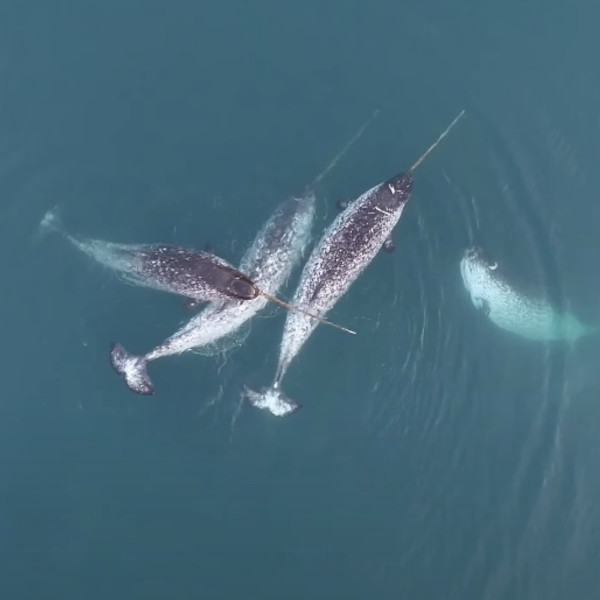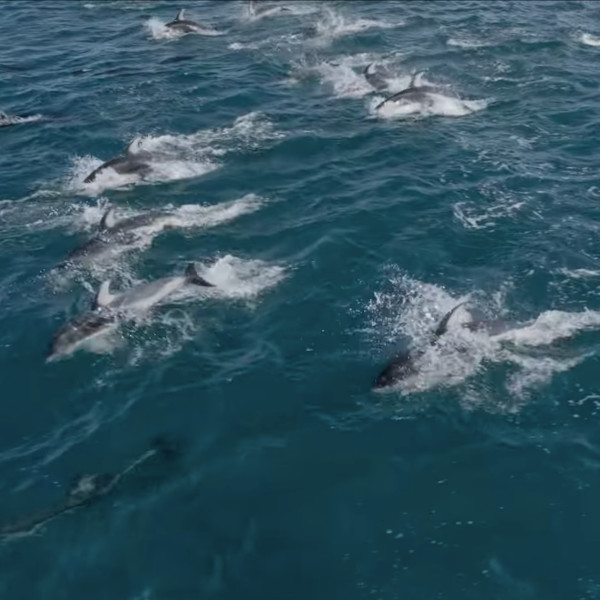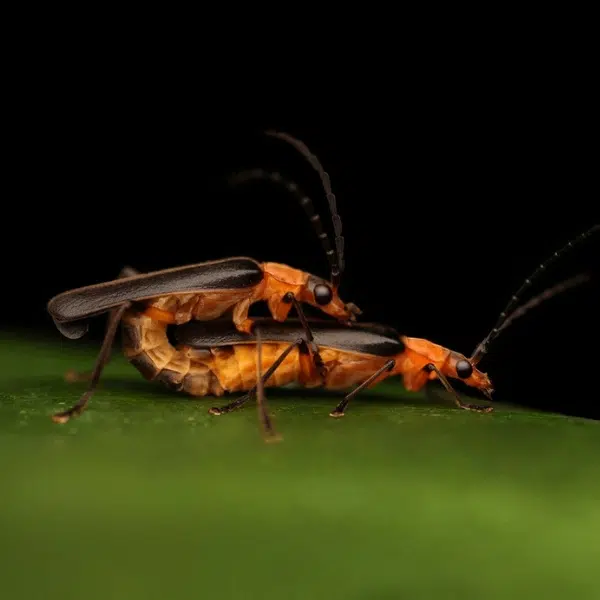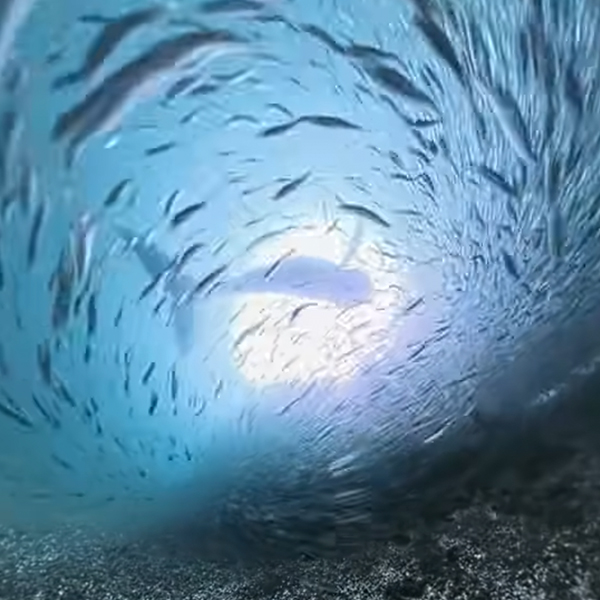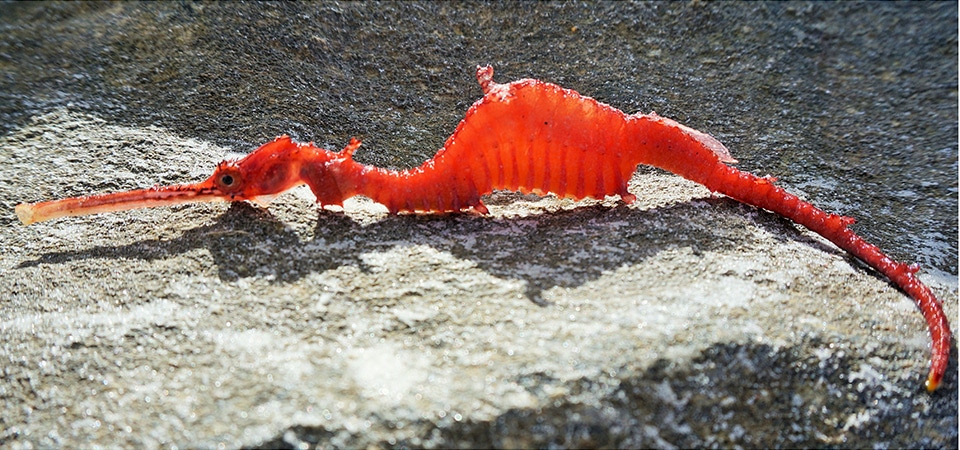
Image via Zoe Della Vedova
While a ruby seadragon may sound like a mythical creature taken from the pages of a fairy tale, this incredibly rare animal was spotted in the deep waters of Western Australia for the first time. Recently, researchers from the Scripps Institution of Oceanography at the University of California San Diego and the Western Australian Museum observed two ruby seadragons for 30 minutes using a mini remotely-operated vehicle.
For an animal that was only previously known from museum specimens, it's a breathtaking discovery. New information about their anatomy, habitat, and behavior has come to light due to the sighting.
Ruby seadragons are related to the common seadragon and leafy seadragon, both found off the southern and western coasts of Australia. Just how does the ruby seadragon differ? For starters, it lacks the elaborate appendages that the more common seadragons use for camouflage. It's a shocking change, as the animals are characterized by their beautiful camouflage.
The ruby seadragon, which was only discovered in 2015, also has a curled tail more similar to seahorses and pipefish. While the color difference points to an evolutionary change—its red color providing sufficient protection in deep water—the curly tail remains a mystery. It's unclear if the more common species simply lost theirs or if the rare species evolved to grow the curly tail.
Proving that nature is constantly surprising us, the ruby seadragon sighting is further evidence that new discoveries lurk around every corner. “There are so many discoveries still awaiting us in southern Australia,” says Nerida Wilson of the Western Australian Museum. “Western Australia has such a diverse range of habitats, and each one is deserving of attention.”
h/t: [Laughing Squid, Science Alert]











































































